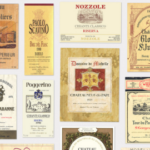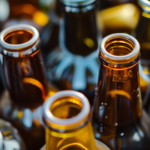 Think you know your sparkling wines? If you’re a fan of celebrations and all that goes with them, you’ve likely been exposed to the glorious sparkling cocktail concoctions often served alongside. From the familiar mimosa and the rare and delicious Bellini’s at brunch to the joyous Champagne toasts at weddings—and even the odd refreshing glass of Moscato after dinner—sparkling wines are present at some of the world’s most pleasant occasions. However, whether they’re flying solo or mixed into a tasty cocktail, all sparkling wines are not created equally.
Think you know your sparkling wines? If you’re a fan of celebrations and all that goes with them, you’ve likely been exposed to the glorious sparkling cocktail concoctions often served alongside. From the familiar mimosa and the rare and delicious Bellini’s at brunch to the joyous Champagne toasts at weddings—and even the odd refreshing glass of Moscato after dinner—sparkling wines are present at some of the world’s most pleasant occasions. However, whether they’re flying solo or mixed into a tasty cocktail, all sparkling wines are not created equally.
Not All Sparkling Wines Are Champagnes
While many people refer to all sparkling wines as Champagne, a true Champagne can only be produced in the Champagne region of France. While some sparkling wines produced outside the European Union bear the name of Champagne, they’re not subject to the same production standards or regulations as European sparkling wines. Here’s a brief guide to the different types of sparkling wines:
-
Champagne.
As mentioned, sparkling wines using Pinot Noir, Chardonnay, and Pinot Meunier grapes and produced in the Champagne region of France can legally bear the name of Champagne. Champagnes range from dry (Brut Nature, Extra Brut, Brut, and dry) to sweet (demi-sec and doux) and often have notes of almond, orange, and cherry. Typically, they are around 12% ABV and have very fine, persistent bubbles due to the second fermentation they undergo in the bottle.
-
Crémant.
Crémants can adhere to the same production methods as Champagnes. However, they are produced from a wider variety of grapes, including Chenin Blanc, Riesling, Pinot Gris, and others. Most are produced in Alsace, Burgundy, and the Loire Valley, but share many of the same properties as Champagnes.
-
Proseccos
Proseccos are produced mostly in Veneto, Italy, primarily with Prosecco grapes. Prosecco is fermented a second time in a tank instead of in the bottle. This results in lighter bubbles that don’t last as long. Most Proseccos are sweeter than Champagne and can have tropical fruit, banana, vanilla, or hazelnut aromas.
-
Cava.
Cava is the Spanish version of sparkling wine. It is produced almost exclusively in Catalonia. Most Cavas use Spanish grapes like Parellada and Macabeo, but some may add French grapes to the final mixture. Cavas have a distinctive sour taste, but can also have a toasty profile as well; Cava producers use the traditional method of secondary fermentation in the bottle. So, its bubbles are similar to those of Champagne.
-
Moscato d’Asti.
Sometimes referred to simply as Moscato, this sparkling wine is produced from Muscat grapes. They have been cultivated since ancient Greek and Roman times for premium sweetness. As a result, Moscato is much sweeter than the other types of sparkling wines. It has a lower alcohol content as well. The best Moscato d’Asti grapes are picked at peak ripeness. It results in sparkling wines that have notes of orange, peach, apricot, and rose.
Find the Ideal Sparkling Wine for Your Occasion
Whether you’re hosting a wedding, a mimosa brunch, or simply want a refreshing bottle of sparkling wine after dinner, it’s essential to choose the right bottle for your tastes. The experts at Payless Liquors can help you find a dry, sweet, or moderate sparkling wine of any variety in our extensive wine selection. Stop in or call ahead to find a new favorite today.












